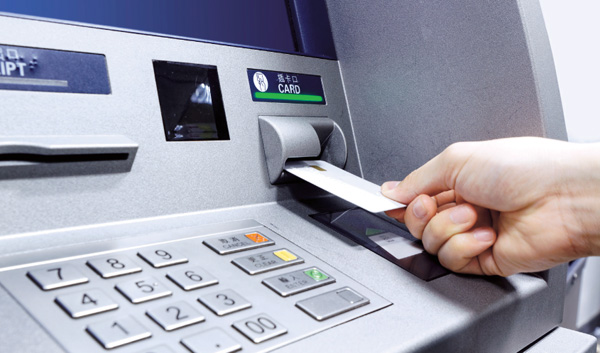In the digital age, with more and more members contacting their credit unions through the Internet or a mobile device, traditional branches can seem a bit quaint and old-fashioned.
Not so, said Teresa Halleck, president/CEO of San Diego County Credit Union. Halleck moved into the top slot at SDCCU in August, after heading The Golden 1 Credit Union since 2002. During her tenure, the number of Golden 1 branches blossomed from 65 to 84.
While embracing today's technology-driven world, she's convinced most members want the option of walking into a branch when they need to or want to. Yes, the credit union's anywhere, anyway, anytime approach means members can use SDCCU's "On the Go Branch" mobile banking through their iPhone, BlackBerry and most mobile phones. But it also means walking up to a familiar teller at a convenient branch.
Recommended For You
SDCCU isn't shy about announcing new branches. When an office was relocated in Kearney Mesa, it triggered a day-long celebration. In addition to refreshments, there were prizes, including a Baja Mexico cruise for two from Carnival Cruise Lines and Carefree Vacations, a one-night stay and spa treatment at La Costa Resort and Spa and a $250 Visa gift card.
"Branches are primarily for members-or potential members who still are banking at other financial institutions-to have personal contact with us," Halleck said. "There's still a segment of the population that prefers, for whatever reason, to do some of their banking in person, whether it's a complex transaction, a large deposit or something of that nature. Service resolution issues are a great use of the branches."
SDCCU looks for promising opportunities to increase its branch presence, she added. The credit union currently has 27 branches, and what that figure will be a few years from now will depend on market opportunities.
Economic conditions will play a role in deciding whether to build or lease. It's a cost-benefit decision that right now means the credit union isn't looking to buy sites but may find some situations where leasing offers an advantage.
"A challenge is really finding a good location," Halleck said. "It's not a good plan to simply add locations if you don't have opportunities for growth. At this point, without growth in the market, it's much more difficult."
"I see branches as a way to increase share of wallet among existing members and to boost market share among potential members. Consumers still define convenience as branches and ATMs. It's interesting because so many consumers use electronic delivery and rarely go into a branch, but they connect convenience with physical presence."
You do need to use good judgment in selecting a location and work to keep costs low, she added.
Paul Seibert, vice president of financial services at EHS Design in Seattle, estimated credit unions and banks will spend $4 billion in new and renovated branches in the next two to three years. He considers that a conservative projection.
"It's a lot of money. So if the branch is dead, why are we spending $4 billion?" Seibert mused.
He cited a recent conversation with David J. Cavell, author of "The Branch is Back." Cavell told Seibert he would bet branches will deliver the highest level of income for the next 10 years compared to alternative connections with members or customers. Cavell added that a branch needs three factors, all considered classic basics: great location, effective design and competent staff.
"I think everybody should ask once a year, 'What are our branches for? Are they delivering what we need?'" Seibert said. "I concur we need to look at branches as one of many service systems. At the same time, branches still are the best way to communicate with members and develop member relationships."
Seibert has observed credit unions seem more willing than banks to spend money on branches. Much of that, he believes, reflects credit unions' desire to be more member-centric.
The most savvy credit unions, he continued, are looking at ways to increase the efficiency of each branch and of the total branch network.
"While hunkering down may have been a short-term strategy, credit unions must embrace evolution and change. If they don't, they're going to get merged into another credit union," Seibert said.
"I'm not sure if it was prompted by the recession or not, but over the past year there has been a lot of attention paid to innovation."
He cited Bank of America as an example. BofA developed a new branch concept-"which they do about yearly"-with advanced technology. There has been a lot of publicity about it, even though only five or 10 of BoA's 6,000 branches will actually have the latest approach. So why bother? Seibert believes management wants to position the bank in the press as an innovator.
He listed some specific features he sees becoming popular in branches: videoconferencing, going green, Wi-Fi and enclosed offices.
"We're seeing another trend internally, and that is changing the titles of people in the branches," Seibert observed. "As we all know, if you name someone something and give them a title, they will do whatever that title is. If you name someone a teller, they're a teller. So the title is changing from teller to maybe associate or member service representative."
"If you want people to act in a certain way, you need to title what that is so they will perform within that."
As for the physical branch itself, "The trick is to make branches offer a well-branded and memorable experience that has a tangible payback."
© 2025 ALM Global, LLC, All Rights Reserved. Request academic re-use from www.copyright.com. All other uses, submit a request to [email protected]. For more information visit Asset & Logo Licensing.







